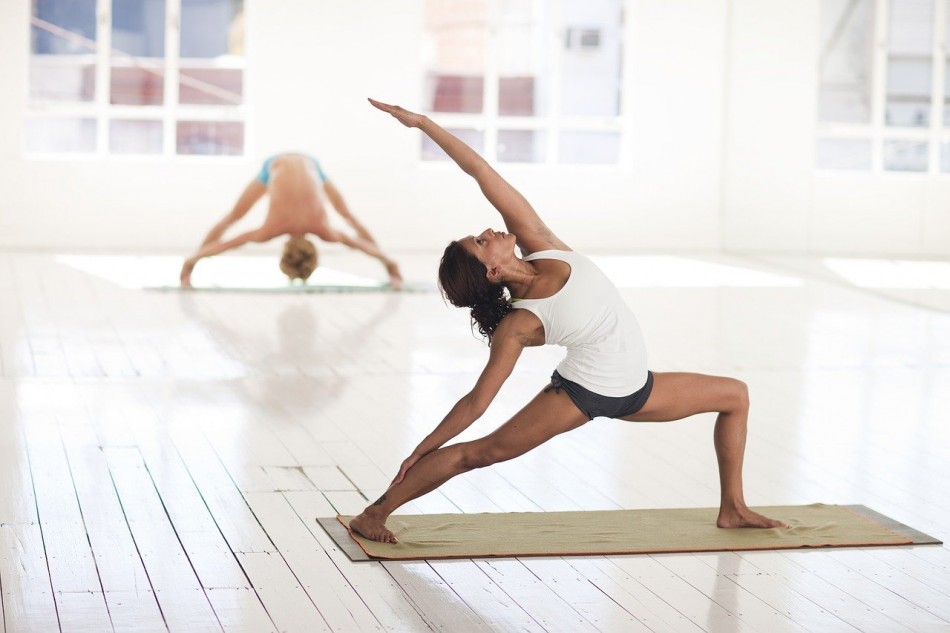4 Stretches for Upper Back Pain

If you have a desk job or spend a lot of time watching TV on your couch or driving, chances are that your upper back is exposed to tension and stress. People often lean forward or slouch. These unhealthy positions take a toll on the shoulders, neck, and upper back in general. If this is your case, you can loosen the tightness and the pain in your muscles and joints with some simple but effective stretches for your upper back shared here.
1. The Cat-Cow Pose
The cat-cow pose is a gentle method to stretch your back and relieve muscle tightness. Start on your hands and knees and position the hands just below the shoulders. The knees should be right under the hips. Arch the back upward, dropping the head towards the chest. Hold for a couple of seconds and then release, returning to a neutral position. Now, keep lowering your back as you move your head back and up towards the ceiling. Hold this position for several seconds and then release. Repeat the whole sequence several times.
Variation: Seated Cat-Cow, on your office chair
Getting on all fours isn't a good idea in the office. Obviously, you want to avoid such awkwardness. You never know who will walk you. You can do a variation of the cat-cow while sitting on a chair:
- Sit comfortably on the edge of your chair
- Make sure your feet are hip-distance apart, and your hands are placed on your knees
- Inhale, elevate your chin and chest forward, pull your shoulders backward, you're gazing up
- Exhale as you rotate the spine, tuck your chin in towards the chest, and release your neck forward
Repeat the sequence several times. If you're struggling with any exercises, you'll find a variety of stretching routines and programs to help you at stretch.com.
2. Lateral Stretch
The lateral side stretches are great for relieving pain and tension in the upper portion of your spine. The cat-cow sequence focuses on the forward and backward movements of the spine, while the lateral stretches are aimed at increasing the flexibility and the range of motion on the sides of the spine.
- Stand up straight and raise both hands over your head
- Clasp the left wrist with your right hand
- Gently lean towards the right, arching your body by gently pulling on the wrist.
- Hold for a couple of seconds and repeat on the other side.
You can repeat the sequence up to 5 times or until it feels good for you.
3. Seated Scapulae Stretch
When people work at their desks, they tend to be hunched over and stick their head and neck forward. The muscle called Levator Scapulae, which connects the shoulder to the spine, gets very tight and might start cause pain and discomfort. Stretching this muscle brings relief and helps you relax and correct your posture.
- Sit comfortably on a chair and grab the seat with your right hand
- Tuck your chin into your chest and rotate the head towards your left shoulder
- With your left arm, gently push your head downwards in the direction of your left armpit
- You should feel a moderate stretch along the right side of your neck
- Hold this position for up to 30 seconds and repeat on the opposite site
- You can repeat the whole set three to five times
4. Corner Stretch
In most cases, upper back pain is a result of poor posture. If the chest muscles are tight, this might worsen the posture and the back pain. The corner stretch releases the chest muscles and promotes a healthy and beautiful posture.
- Go to a corner of a room with your face towards the wall
- Stand with your feet together, about 2 feet away from the corner
- Place one forearm on each wall
- Make sure your elbows are just below the shoulders
- Lean forward
- You should feel a good stretch in your chest and your shoulders
- Make sure your lower back remains in a neutral position
- Hold from 30 to 60 seconds
- Repeat several times during the day for optimal results.
If a corner of a room is not available for stretching, you can do this exercise in a doorway. Place your forearms on the two sides of the frame and lean forward.
If you are still at the start of your stretching journey, it is important you don't overexert yourself. Otherwise, you risk suffering an injury. You can supplement your routine with other stretching exercises. It's a good idea to talk to a professional trainer or physical therapist, especially if you have a preexisting orthopedic condition.
© 2024 ParentHerald.com All rights reserved. Do not reproduce without permission.
* This is a contributed article and this content does not necessarily represent the views of parentherald.com
